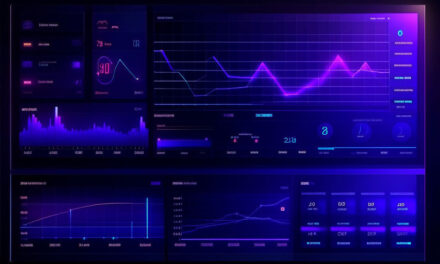If you’re looking to make gains in the forex market over the short to medium-term, swing trading could be the strategy for you. While day-traders aim to capitalize on small price fluctuations within a single trading day, swing traders focus on capturing larger price movements that can last from a few days to several weeks. This article will provide you with a comprehensive guide to swing trading in forex, covering everything from the basics to advanced strategies that can help you maximize your profits. So, let’s dive in and explore the world of swing trading.
Understanding the Basics of Forex Swing Trading
Before we delve into the intricacies of swing trading, it’s important to have a good grasp of the basics. Unlike day trading, where positions are closed by the end of the trading day, swing traders aim to ride the waves of price movements, holding onto their positions for more extended periods. This approach requires patience and the ability to identify trends that may take some time to develop.
Swing trading is a popular strategy among forex traders due to its potential for significant profits. By capturing the intermediate price swings within a larger trend, swing traders can take advantage of both upward and downward movements in the market. However, it’s crucial to understand that swing trading also carries risks, as positions are held overnight and can be exposed to unexpected market events.
To successfully engage in swing trading, it’s essential to understand various technical analysis tools that can assist in identifying potential swing trading opportunities. Support and resistance levels, for example, are key indicators that help traders identify price levels where the market is likely to reverse. By analyzing historical price data, swing traders can determine these levels and make informed decisions about when to enter or exit a trade.
Moving averages are another valuable tool for swing traders. These indicators smooth out price data over a specified period, providing a clearer picture of the overall trend. By using moving averages of different lengths, traders can identify potential entry and exit points based on the crossovers and divergences between the moving averages.
Trendlines are also widely used by swing traders to identify and confirm trends. By drawing trendlines connecting significant highs or lows on a price chart, traders can visualize the direction of the market and make informed decisions about potential entry or exit points.
While technical analysis is a crucial aspect of swing trading, successful swing traders also pay close attention to market sentiment and news events that can impact currency prices. By keeping a watchful eye on economic indicators such as GDP growth, inflation rates, and employment data, swing traders can gauge the overall health of an economy and make more informed trading decisions.
In addition to economic indicators, central bank announcements play a significant role in shaping market sentiment. Monetary policy decisions, interest rate changes, and statements from central bank officials can have a profound impact on currency prices. By staying informed about these events and understanding their potential implications, swing traders can better position themselves to take advantage of potential price movements in the forex market.
Overall, swing trading in the forex market requires a combination of technical analysis skills, market awareness, and the ability to manage risk effectively. By understanding the basics and continuously learning and adapting to market conditions, swing traders can potentially achieve consistent profits over the long term.
Identifying Entry and Exit Points in Forex Swing Trading
One of the critical aspects of swing trading is identifying the ideal entry and exit points for your trades. This requires a mix of technical analysis and the ability to gauge market sentiment. When it comes to entering a trade, many swing traders look for confirmation signals, such as a break above a key resistance level or a bounce off a significant support level.
Exit points are equally important, as they determine your profit potential and risk management. Traders often use a combination of technical indicators, such as moving average crossovers or trendline breaks, to decide when to close their positions. Additionally, setting stop-loss orders can help protect your capital by automatically closing the trade if the market moves against you beyond a certain point. Proper risk management is crucial in swing trading and can help you minimize losses and protect your gains.
Analyzing Market Conditions for Profitable Swing Trading
Swing traders need to understand the different market conditions that can impact their trades. These conditions can be broadly classified as trending, range-bound, or volatile. Each condition requires a different approach.
In trending markets, swing traders look for opportunities to join the trend and ride it until signs of exhaustion appear. This can be done using trend-following indicators, such as moving averages or the relative strength index (RSI). On the other hand, in range-bound markets, traders focus on buying near support levels and selling near resistance levels. Volatile markets, characterized by sudden price movements, require quick decision-making and the ability to adjust your approach on the fly.
Utilizing Leverage to Maximize Forex Swing Trading Returns
Leverage can be a powerful tool for swing traders, as it allows you to control larger positions with a smaller amount of capital. However, it’s essential to use leverage wisely and understand the associated risks. While leverage can amplify your gains, it can also magnify your losses. Therefore, it’s crucial to maintain a disciplined approach and use appropriate position sizing to manage risk effectively.
Another consideration when using leverage is the margin requirements set by your broker. Swing traders should have a clear understanding of their broker’s margin policy to avoid unexpected margin calls that could force the premature closure of their trades.
Applying Risk Management to Swing Trading in Forex
Risk management is a fundamental aspect of successful swing trading. It involves setting and adhering to risk-to-reward ratios, which determine the potential profit against the acceptable loss on each trade. Proper risk management ensures that no single trade has the ability to wipe out a significant portion of your trading capital.
Aside from setting risk-to-reward ratios, swing traders should also diversify their portfolios by trading multiple currency pairs. This helps to spread risk and reduces the impact of losses on individual trades. Additionally, setting a maximum daily loss limit can prevent emotional decision-making and help maintain a disciplined approach to trading.
Developing a Strategy for Forex Swing Trading
Successful swing trading requires a well-defined strategy that aligns with your trading goals and risk tolerance. This strategy should include guidelines for identifying potential trades, determining entry and exit points, and managing your positions. It’s vital to develop a systematic approach that allows you to stick to your plan and avoid emotional decision-making.
As part of your strategy, consider backtesting your trading ideas using historical data to assess their profitability. This will help you fine-tune your rules and identify potential pitfalls before risking real capital. Regularly reviewing and adjusting your strategy is essential to adapt to changing market conditions and maximize your chances of success.
Identifying Trading Opportunities with Technical Indicators
Technical indicators play a significant role in swing trading strategies. They help identify potential trading opportunities by providing insights into price trends, momentum, and market conditions. Popular technical indicators used by swing traders include moving averages, MACD (Moving Average Convergence Divergence), Bollinger Bands, and stochastic oscillators, among others.
By combining multiple technical indicators, swing traders can gain a more comprehensive picture of the market and confirm potential entry and exit points. However, it’s important to avoid overcomplicating your analysis and be mindful of the limitations of technical indicators. They are not foolproof and should be used in conjunction with other analysis techniques.
Analyzing Price Action to Time Entries and Exits
In addition to technical indicators, price action analysis can provide valuable insights into market trends and reversals. Price action refers to the movement of a currency pair’s price over time, and swing traders analyze patterns and formations to make informed trading decisions.
Candlestick patterns, such as doji, engulfing, and hammer, can provide clues about potential trend reversals or continuation. Support and resistance levels can also help determine key entry and exit points. By combining price action analysis with technical indicators, swing traders can improve their timing and increase the probability of successful trades.
Using Automated Trading Strategies for Forex Swing Trading
Automated trading systems, also known as expert advisors or trading robots, can be a valuable tool for swing traders. These systems analyze market conditions and execute trades based on predefined rules without the need for constant human intervention.
When using automated trading strategies, it’s crucial to choose a reliable and well-tested system. Thoroughly backtest the system using historical data and monitor its performance in real-time before committing real capital. Additionally, always keep an eye on the automated trading system to ensure it aligns with your trading goals and risk tolerance.
Capitalizing on Short to Medium-Term Trends with Forex Swing Trading
Swing trading in forex provides a means to capitalize on short to medium-term trends and price movements. By adopting a systematic approach, understanding market conditions, and utilizing appropriate risk management, swing traders can potentially achieve consistent profits.
Remember, swing trading requires patience, discipline, and continuous learning. Keep refining your strategy, staying updated with market developments, and seeking opportunities that align with your trading plan. With dedication and perseverance, you can become a successful swing trader in the forex market.
Start exploring swing trading today and unlock the potential for capturing short to medium-term gains in the exciting world of forex.






